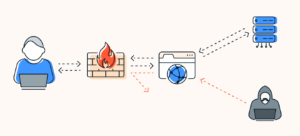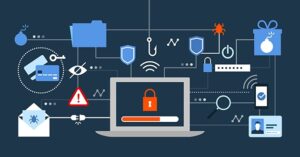The Unpredictable Nature of Life
Life is a beautiful, unpredictable journey, but with its joys come inevitable bumps in the road. No matter how meticulously you plan your career, your budget, or your next vacation, some things are simply out of your control. A sudden job loss, an unexpected major car repair, an unforeseen medical bill, or a tree falling through your roof—these are the financial curveballs that can turn a stable life into a stressful crisis overnight.
This is where the concept of an Emergency Fund moves from a financial “nice-to-have” to an absolute “must-have.” It is your first, best, and most robust line of defense against the chaos of the unexpected. Far more than just a savings account, an emergency fund is a psychological security blanket and a cornerstone of true financial freedom.
What Exactly is an Emergency Fund?
In its simplest form, an emergency fund is a readily accessible pool of money set aside specifically to cover unexpected and necessary expenses. Crucially, it is not for:
- A down payment on a house
- A luxury vacation
- Holiday shopping
- Investment opportunities
An emergency fund is strictly for emergencies—events that are large, unexpected, and absolutely require immediate cash. Think of it as financial first aid; you hope you never need it, but you’re profoundly grateful it’s there when disaster strikes.
The Three Pillars of Financial Security
A robust emergency fund provides foundational stability that supports three key areas of your financial life:
1. Stability and Stress Reduction
The most immediate benefit of an emergency fund is the reduction of stress. When a major expense hits, the emotional burden is often compounded by the pressure of where the money will come from. Having a dedicated fund removes the scramble. Instead of panicking about how to pay for an emergency room visit or a new furnace, you can focus on resolving the emergency itself. This peace of mind is invaluable and is arguably the most powerful return on your savings.
2. Debt Prevention
Without an emergency fund, most people resort to the easiest, but most expensive, source of quick cash: high-interest debt. This typically means credit cards, payday loans, or home equity lines of credit. While they solve the immediate problem, they create a long-term, compounding one. A $5,000 emergency paid for with a credit card at 20% interest can quickly spiral into a crippling debt load that takes years to pay off.
An emergency fund allows you to sidestep this vicious cycle completely. It’s a zero-interest, self-funded loan that you pay back to yourself over time, preserving your credit score and your financial health.
3. Investment Protection
For those who are disciplined with their investing (401(k)s, retirement accounts, brokerage accounts), a sudden financial shock without a dedicated fund can be disastrous. The temptation, and often the necessity, is to sell investments to cover the cost. This often forces you to sell at an inopportune time, locking in losses and permanently disrupting the compounding growth that is the engine of long-term wealth.
An emergency fund acts as a protective shield around your retirement and investment portfolios, ensuring that life’s emergencies don’t derail your future wealth accumulation.
How Much Should You Save? The Golden Rule
The standard recommendation for an emergency fund is enough to cover three to six months of essential living expenses.
Define Your “Essential Expenses”
To calculate your target number, you first need to define what counts as “essential.” This includes:
- Housing: Rent or mortgage payment, property taxes (if applicable)
- Food: Groceries (not dining out)
- Utilities: Power, water, gas, internet/phone
- Transportation: Car payment, insurance, fuel/public transit costs
- Insurance: Health, life, home/renter’s insurance
- Debt Minimums: Minimum payments on all outstanding loans (student, car, credit cards)
Do not include discretionary spending like gym memberships, streaming services, or entertainment.
Adjusting the 3-to-6-Month Rule
The amount you need may vary based on your personal circumstances:
| Your Situation | Recommended Fund Size | Rationale |
| Dual Income / High Job Security | 3 Months | Two incomes provide a buffer; less risk of prolonged total income loss. |
| Single Income / Specialized Job | 6 Months | Higher risk if one person loses their job; longer time needed to find a niche replacement role. |
| Self-Employed / Commission-Based | 9-12 Months | Income is volatile and unpredictable; recovery from job loss/business downturn takes longer. |
| High Health Risks / Large Family | 6-9 Months | Higher potential for unexpected, large medical or family expenses. |
It is a worthwhile goal to start small—even $1,000 can cover many common emergencies—and then work towards the 3-6 month full target.
Where to Keep Your Emergency Fund
The location of your emergency fund is just as important as the amount. The funds must meet two key criteria: Safety and Liquidity.
- Safety: The money must be protected from market fluctuations. This means not investing it in stocks or cryptocurrencies.
- Liquidity: You must be able to access the money quickly and easily, ideally within 24-48 hours, without penalties.
The best homes for your emergency fund are:
- High-Yield Savings Accounts (HYSAs): These accounts, typically offered by online banks, offer better interest rates than traditional banks while still providing FDIC (or equivalent) insurance and instant access. This is the gold standard.
- Money Market Accounts: Similar to HYSAs, offering liquidity and competitive interest rates.
- Certificates of Deposit (CDs): Only recommended for a portion of a very large fund, and only if you choose a “laddering” strategy to maintain some liquidity.
Keep It Separate: The single biggest mistake people make is keeping the emergency fund in their everyday checking account. It must be held in a completely separate account, ideally at a different bank, to prevent accidental spending or “lifestyle creep.”
Building the Fund: Practical Strategies
Building a large fund can seem daunting, but it’s a marathon, not a sprint. Consistency is key.
- Automate Your Savings: Treat your emergency fund contribution like any other non-negotiable bill. Set up an automatic transfer from your checking account to your emergency fund on payday. Even $25 or $50 per week adds up quickly.
- Embrace the “Windfalls”: Direct any unexpected money straight into the fund. This includes tax refunds, work bonuses, inheritance, or cash gifts. These “found money” moments can dramatically accelerate your progress.
- Trim the Fat: Conduct a “no-excuses” audit of your monthly budget. Cancel unused subscriptions, temporarily reduce discretionary spending, and commit the savings directly to the fund. This temporary sacrifice is the down payment on your future peace of mind.
- Side Hustle Income: If possible, dedicate any income from a temporary side job or selling unused items (e.g., clothes, furniture) exclusively to the fund.
The Takeaway
An emergency fund is not a glamorous investment, but it is the most essential one you will ever make. It is the unshakeable foundation upon which all other financial goals—retirement, investing, homeownership—are built. It provides stability in the face of uncertainty, prevents the crushing burden of high-interest debt, and protects your long-term wealth.
Start today. Calculate your number, open a high-yield savings account, and automate your contribution. The security you gain is not just financial; it’s a profound sense of control over your own life. Secure your future by building your wall of financial defense—the power of an emergency fund awaits.



